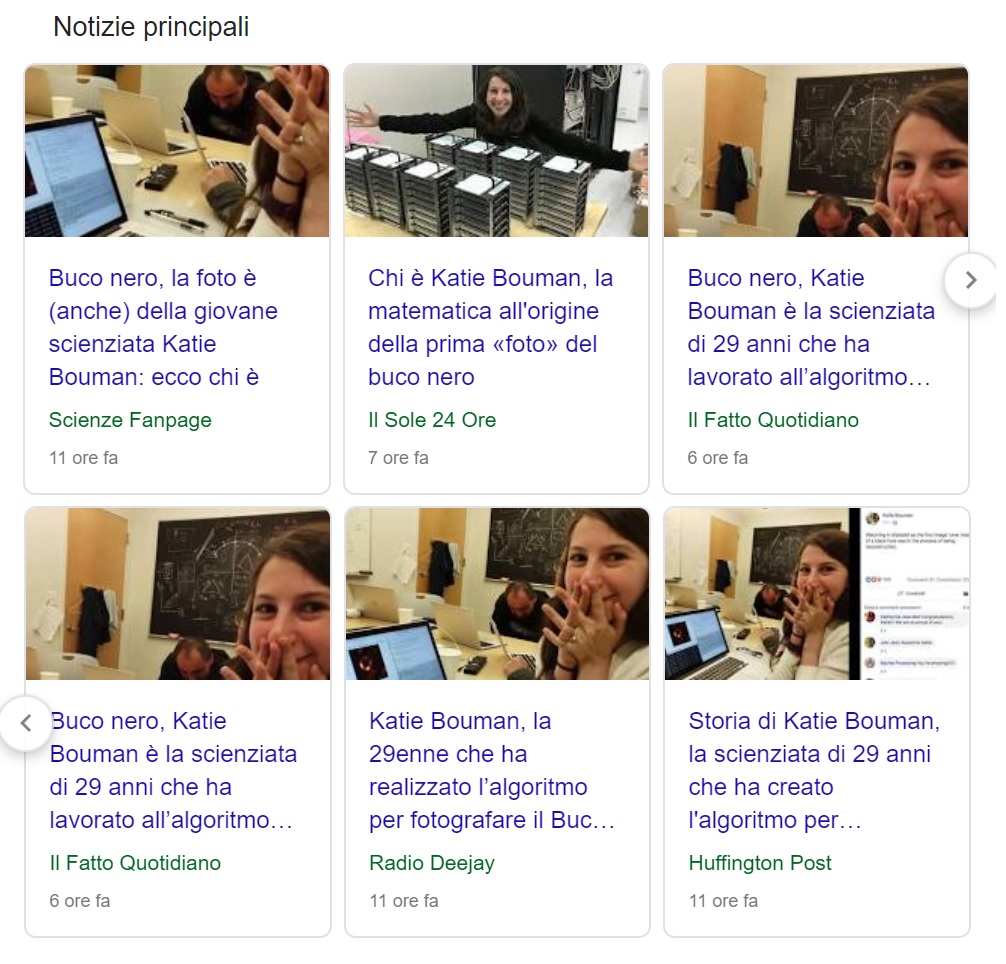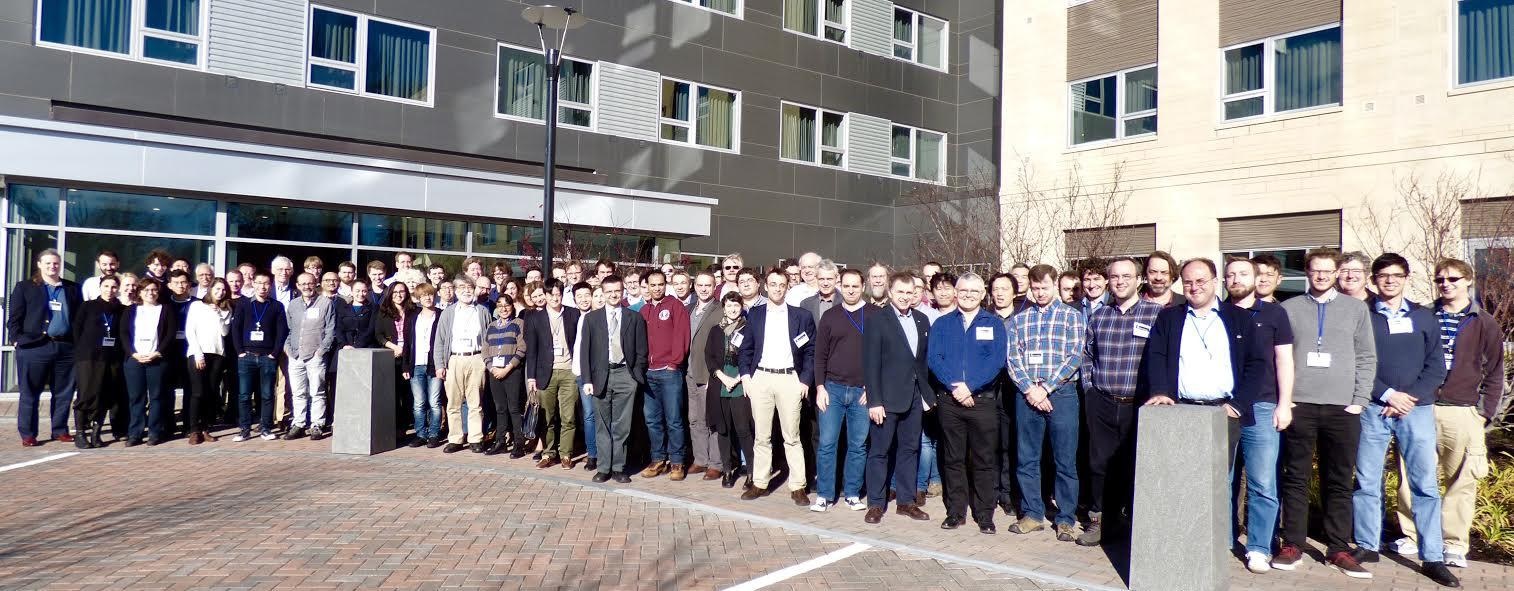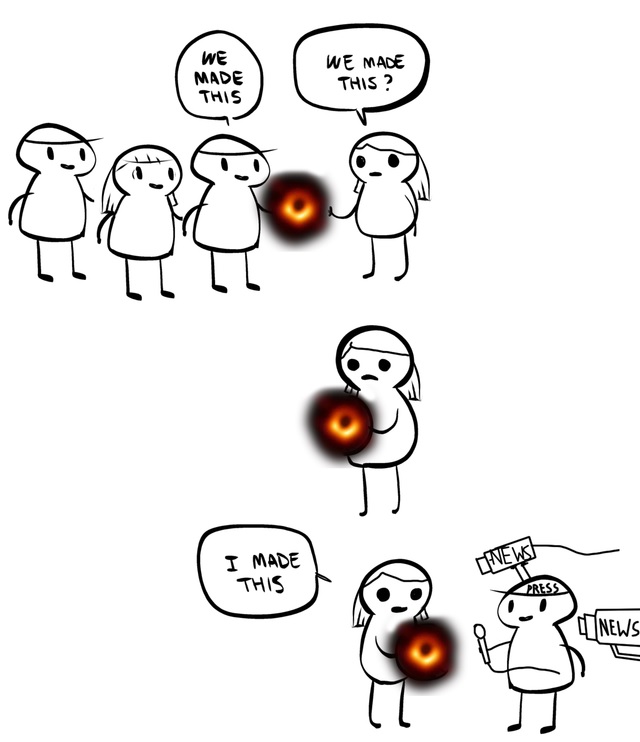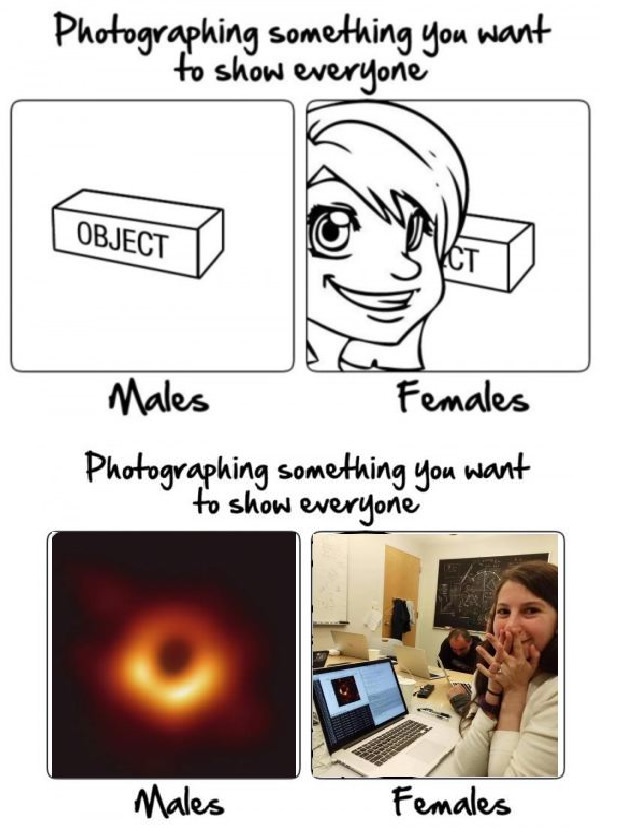Il 10 aprile 2019 è stato “fotografato” per la prima volta un buco nero grazie al progetto internazionale Event Horizon Telescope: dopo aver dedicato qualche istante a parlare dello straordinario evento, i media di tutto il mondo si sono immediatamente concentrata su Katie Bouman, una ricercatrice informatica americana che pur avendo contribuito a meno dell’1% dell’impresa per la stampa (inclusa ovviamente quella italiana) è diventata subito “la donna che ha fotografato il buco nero”.

Questa vera e propria fake news nasce da un commento su Facebook della Bouman, che lascia (involontariamente?) molto spazio agli equivoci sulla paternità (anzi, “maternità”!) della foto:
Watching in disbelief as the first image I ever made of a black hole was in the process of being reconstructed.
Gepostet von Katie Bouman am Mittwoch, 10. April 2019
In realtà l’apporto della Bouman è stato praticamente nullo se confrontato con le attenzione che il mainstream le ha rivolto: per quanto ne possiamo capire, la ricercatrice avrebbe collaborato a una sotto-parte della sotto-parte di un programma, elaborando una specie di “adattatore” che conferisce un determinato formato ai dati per inserirli nel programma effettivo. In ogni caso, ufficialmente non fa nemmeno parte del team che ha portato a termine l’impresa, se non come additional contributor
Il 99,9% del lavoro è stato svolto come al solito da decine di maschi “sfigati”, dai nomi peraltro improbabili (Kazunori Akiyama e Andrew Chael) che i tg della sera si guarderanno bene dal costringerci a imparare a memoria.

Questo demenziale e patetico sfoggio di suprematismo rosa e ginecocentrismo ha ispirato diverse battutacce e vignette: ne riportiamo solo un paio, anche per evitare di colpevolizzare eccessivamente la povera Katie Bouman, più che altro vittima di un gioco più grande di lei.


Bisogna riconoscere, tuttavia, che non sono solo i “maschilisti” ad essersi indignati per la rodomontata della ricercatrice: una delle sue sparute colleghe, Sara Issaoun, con un tweet piccato le ha addirittura negato qualsiasi ruolo nella produzione dell’immagine del buco nero, criticando al contempo il fanatismo mediatico.
There are more of us. Katie’s algorithm, despite the media’s stance, was not used to produce this image. There were three algorithms used and combined to form the final image, and a team of 40 scientists part of that aspect of the project (including myself and more women).
— Sara Issaoun (@SaraIssaoun) 11 aprile 2019
Persino il “New York Times” ha dovuto specificare che la Bouman non c’entra praticamente nulla, giustificando però l’atteggiamento dei media con la scusa che it was a photo too good not to share. Il giornale ha intervista ancora la signorina Sara Issaoun, che si è schierata contro la lone-wolf success narrative (chi è più malizioso vedrà qui in atto il noto teorema sulle donne che odiano a morte le proprie colleghe) e l’astrofisico Feryal Ozel, che ha voluto ricordare uno dei suoi studenti che si è dovuto fare una marea di viaggi al Polo Sud per lavorare sul telescopio piazzato laggiù. Il suo nome? Ignoto. Sappiamo solo che è maschio, e questo basta per dimenticarlo.







Il linguaggio in uso comune in molti laboratori scientifici di analisi è Python.
Scrivere un programma im python di solito significa prendere alcune librerie ( tipo mattoncini lego ma molto più complessi) e unirli per fagli fare un lavoro.
Di solito quelli bravi veramente scrivono librerie geniali.
Quelli scarsi ( tipo me) assemblano i pezzi per fare cose.
Veramente è come costruire qualche cosa col lego, è semplice.
l’ immagine del buco nero M87 è stata ottenuta da un programmino che usava una serie di librerie piuttosto complesse.
Chi ha messo insieme le librerie non ha fatto nulla di speciale, ha solo letto i documenti ( forse) di specifica e le ha assemblate.
Chi ha scritto le librerie ha fatto il vero lavoro
Ecco una delle librerie fondamentali del lavoro.
https://github.com/achael/eht-imaging?fbclid=IwAR0DAl_6aKUsXdrYIHzS3vW0KXlGbNN-TjNl9AqQwEUMZ8NGAAx9xmqC_o8
Quindi confermi che lei c’entra poco? Ti copio-incollo il messaggio trovato su una board americana, giusto per confermare che il ruolo della Bouman è stato tutt’altro che decisivo:
e anche questo meme su Python:
Neanche il tempo di fare la battutaccia (“OK, Katie; allora adesso usciresti con me?” – e lei: “sì, ma comunque ti vedo solo come un amico “) ed è partito furioso il white-knighting a favore della signora (sposata) Katie da parte del gay dichiarato (e dal cognome… uh.,. ebraico?) Andrew.
Comunuque Andrew Chael si dichiara gay astronomer in uno dei suoi tweet in difesa della racchietta
https://www.straitstimes.com/world/united-states/online-trolls-hijacked-a-scientists-image-to-attack-katie-bouman-they-picked-the